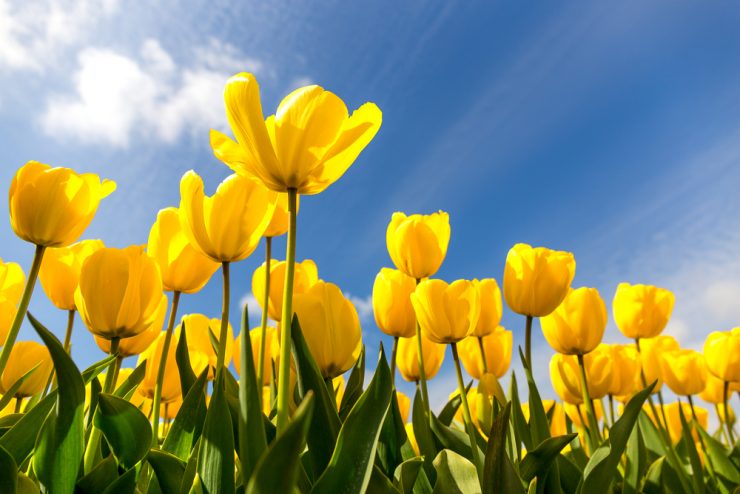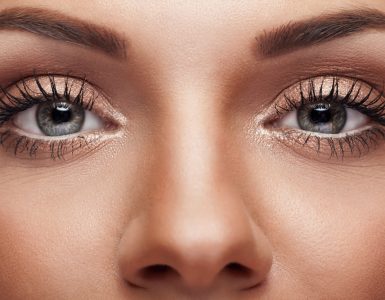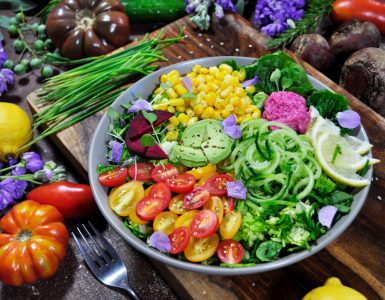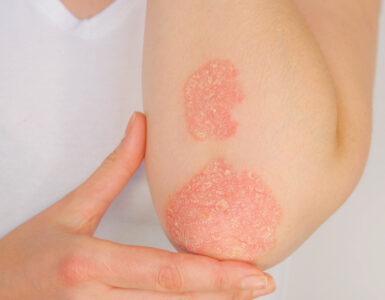The arrival of spring heralds the start of the hay fever season. Editor Jane Garton looks at natural ways to ease the sniffles and sneezes.
While many of us welcome the warmer days of spring if you are one of the 33% of people in the UK who suffer with hay fever you might not be quite so positive. As the trees begin to pollinate and flowers start to bloom, pollen returns triggering an allergic response in sufferers.
Hay fever symptoms, which include watery itchy eyes, sneezing, runny nose and even irritability, can put a serious damper on sunny days. And more bad news – thanks to climate change and rising temperatures the pollen season is beginning earlier, starting as early as February for some and finishing as late as November.
COMMON TRIGGERS
Precisely when the hay fever season kicks in, however, depends on your triggers. Birch tree pollen can mark the beginning of the sniffles and sneezes as early as March for some, while for others the appearance of grass pollen in early May is the start of summer misery. Some, meanwhile, have a gloriously sniffle-free summer only to start sneezing in the autumn when mugwort, chrysanthemum and mould spores take over.
Unfortunately there is not much you can do to escape the annual onslaught of pollen but there are things you can do to keep it at bay, which in turn can help to keep a check on symptoms.
STAY INDOORS
Take your workout indoors or pay a visit to the gym on days when the pollen count is high or your symptoms are especially bad. But what if you love walking or jogging in the sunshine? The secret is to avoid venturing out at peak pollen times such as in the early morning or late afternoon and to try to minimise your exposure to allergens as much as possible. For example, avoid tree-lined streets, and grassy parks and steer clear of major roads.
BE WARY OF HOUSPLANTS
More than 75% of hay fever sufferers are allergic to at least one common houseplant, according to research. The reason? Allergens in plant sap can diffuse into the air and trigger symptoms. Chrysanthemums, for example, can cause skin reactions. Lilies can cause mild allergic reactions like sneezing or congestion if the stamens with their pollen are not removed, according to Allergy UK. The answer is to keep houseplants out of the house during the hay fever season and keep a note of plants that exacerbate symptoms and avoid them too.
CHANGE CLOTHES
Pollen particles and mould spores can easily get trapped on your body, hair, clothes and shoes while you are out and about. As soon as you get home wash your hands, rinse your eyes, change your clothes and have a shower especially after working in the garden. Same goes for pets. Dogs and cats can become allergy magnets after running around outdoors. Sponge down their fur before letting them loose around the house.
USE A POLLEN BARRIER BALM
Studies carried out by Allergy UK show these may help trap airborne allergens before they hit your airways. They can be applied around the base of the nostrils to form an invisible barrier against pollen.
GO HERBAL
Studies show butterbur has similar effects to over-the-counter antihistamines[i]. Start taking it around six weeks before your hay fever season starts for maximum benefits.
Meanwhile, camomile has anti-inflammatory and antihistamine properties and makes a soothing and refreshing tea.
For sore and irritated eyes, try applying cold wet camomile tea bags to the eyes for ten minutes.
Pycnogenol,[ii] an antioxidant extract from the French maritime pine tree, may help inhibit the release of histamine within the lining of the eyes and nose, so is worth trying, too.
WHY NOT ALSO TRY SOME OF THESE IDEAS:
Go garlic: Eat raw garlic or take a garlic capsule to help build immunity and reduce nasal catarrh.
Soothe it: Rub some aloe vera gel, around your nostrils and eyelids to soothe itchiness and redness. It’s a natural antihistamine.
Be essential: Place a few drops of an essential oil such as eucalyptus on a tissue and inhale to relieve a stuffy nose.
Have a spoonful of honey: It is thought exposure to small amounts of pollen in locally produced honey may be desensitising.
Vacuum and dust your house regularly: Use a damp cloth to remove any lingering pollen or spores
Plan holidays: Location matters – remember mountains tend to have fewer flowers and pollen counts are lowest by the sea.
To find out more visit the Allergy UK website.
[i] www.ncbi.nlm.nih.gov/pubmed/19262383
[ii] A randomized, double-blind, placebo-controlled exploratory study to evaluate the potential of pycnogenol for improving allergic rhinitis symptoms.
Wilson D1, Evans M, Guthrie N, Sharma P, Baisley J, Schonlau F, Burki C.
























Add comment